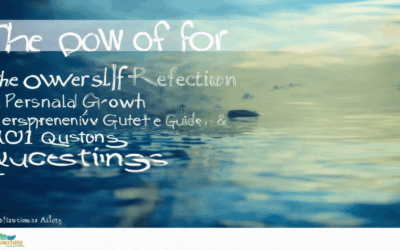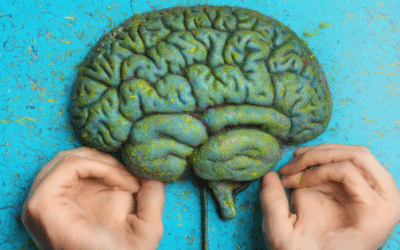Developing mindfulness habits can transform your daily life, offering a powerful way to find balance, reduce stress, and enhance productivity. In today’s fast-paced world, many struggle with maintaining focus, cultivating compassion, and staying present amidst constant distractions. This comprehensive guide delves into the core principles that can help you build lasting mindfulness practices, exploring everything from the 7 Cs of mindfulness to the 5 Rs, and even the 3-3-3 rule for managing time effectively. Whether you’re seeking to adopt a mindful lifestyle or overcome unconscious patterns, this article provides actionable insights and practical techniques to help you thrive. By integrating these strategies, you’ll learn how to create a consistent practice that aligns with your unique needs and goals, ultimately fostering a more peaceful and purposeful existence.

What Are the 7 Cs of Mindfulness?
The 7 Cs of mindfulness are a popular framework used to guide individuals in developing mindfulness practices. These components help cultivate mental awareness, emotional balance, and overall well-being. Below is a breakdown of each:1. **Connection**: This involves cultivating present-moment awareness, helping individuals connect with their thoughts, feelings, and surroundings. Practices like meditation and breathing exercises can enhance this aspect.2. **Compassion**: Developing kindness and empathy toward oneself and others fosters a supportive mindset. Regularly practicing compassion through small acts of kindness or self-compassion can strengthen this trait.3. **Creativity**: Engaging in creative activities like journaling, art, or problem-solving encourages innovative thinking and expression. This component helps in breaking free from routine and fostering fresh perspectives.4. **Character**: Building strong ethical and moral values is crucial. Mindful practices can help individuals align their actions with their beliefs, promoting integrity and authenticity.5. **Confidence**: Trusting oneself and embracing uncertainty are key aspects of confidence. Mindfulness practices can reduce self-doubt and boost self-esteem, enabling better decision-making.6. **Contribution**: Finding ways to give back to others and society fosters a sense of purpose. Acts of service or volunteering can deepen one’s commitment to making a positive impact.7. **Caring**: Cultivating care for oneself and others leads to healthier relationships and a more fulfilling life. Regular self-care routines and empathetic interactions contribute to this aspect.By focusing on these 7 Cs, individuals can develop a holistic approach to mindfulness, leading to greater peace, productivity, and happiness in their daily lives.
The 5 Rs of Mindfulness
Mindfulness is often described through various frameworks to guide practitioners. One widely recognized model is the “5 Rs” of mindfulness, which provide a structured approach to cultivating awareness and presence. These principles help individuals navigate life’s challenges with greater ease and clarity.
1. Recognition
Recognition is the foundation of mindfulness. It involves fully acknowledging the present moment, including your sensory experiences, emotions, and thoughts. By recognizing the now, you establish a firm grounding in the present, allowing you to engage with life as it unfolds rather than getting lost in regrets or fantasies.
2. Response
Response is about how you choose to react to situations. Rather than automatic pilot or default reactions, mindfulness encourages intentional responses rooted in self-awareness and compassion. This doesn’t mean suppressing emotions but finding balance in understanding and managing them constructively.
3. Resting
Resting in stillness is a cornerstone of mindfulness practice. It involves quieting the mind through meditation or moments of silence, allowing stress and tension to dissolve. This stillness fosters introspection and connection to your true self, helping you recharge and renew your energy.
4. Relationship
Relationship refers to the way you relate to yourself and others. Mindfulness emphasizes fostering kind and understanding relationships, whether with loved ones, colleagues, or even strangers. By cultivating empathy and nonjudgmental awareness, you create healthier connections and reduce conflict.
5. Reconnection
Reconnection is about bridging the gap between your inner self and the world around you. Through mindfulness, you reawaken your sense of purpose and passion, feeling more aligned with your values and goals. This reconnection helps you live authentically and find meaning in everyday experiences.
- Mindfulness practices like meditation and breathing exercises can help cultivate recognition and resting.
- Engaging in acts of kindness and compassion can support your relationship with others.
- Reflection through journaling or self-reflection can deepen your reconnection with yourself.
By embracing the 5 Rs of mindfulness—recognition, response, resting, relating, and reconnection—you create a holistic approach to living fully and consciously. This framework offers a roadmap for navigating life’s ups and downs with grace, clarity, and resilience.
How to Make Mindfulness a Habit
To establish mindfulness as a regular practice, consider the following structured approach:
- Set a Consistent Routine:** Choose a specific time each day for your mindfulness practice, such as first thing in the morning or before bed. Consistency helps build the habit over time.
- Start Small:** Begin with short sessions, say 5 minutes a day, and gradually increase to 10 minutes as you become more comfortable. Over time, aim for longer durations to deepen your practice.
- Choose a Technique:** Focus on a method that suits you. Start with something simple like breath awareness or a brief silent meditation. Guided meditations and body scans can be effective, but you can adapt them to your preference.
- Incorporate Mindfulness in Daily Activities:** Practice mindfulness while performing everyday tasks, such as eating, walking, or commuting. This makes it easier to fit into a busy schedule without additional time commitment.
- Be Kind to Yourself:** Understand that forming a habit takes time. Don’t be hard on yourself if you miss a day. Use self-compassion to stay motivated.
- Utilize Resources:** Consider using mindfulness apps like Headspace or Calm for guided sessions. Alternatively, explore free resources such as YouTube videos or audio guides for meditation and breathing exercises.
- Track Progress:** Keep a journal to document your mindfulness practices and reflect on improvements. This can help you stay accountable and recognize the benefits of your efforts.
- Stay Motivated:** Remind yourself of the numerous benefits of mindfulness, such as reduced stress, improved sleep, and enhanced productivity. These reminders can help you stay committed despite challenges.
By following this approach, you can cultivate a meaningful mindfulness practice that enriches your daily life.
What Are the 3 Cs of Mindfulness?
Mindfulness is often broken down into three core components, known as the “3 Cs” of mindfulness. Understanding these components can help you cultivate a deeper sense of awareness and emotional balance. Let’s explore each one:1. **Curiosity** Curiosity in the context of mindfulness means approaching your thoughts and experiences with an open mind. It’s like becoming a detective, observing your thoughts without judgment. This encourages exploration rather than attachment or aversion. By staying curious, you allow yourself to see things as they truly are, fostering a mindset of continuous learning and growth.2. **Compassion** Compassion is the ability to treat yourself and others with kindness and understanding. In mindfulness, this extends to noticing your own suffering and responding with empathy. Research shows that practicing compassion can reduce stress and improve relationships. It’s about recognizing that we’re all connected and deserving of care, whether it’s towards ourselves or others.3. **Calm Center** The “calm center” refers to the mental space you create through regular mindfulness practice. This is the place where you can return to when life feels overwhelming. Techniques like deep breathing, meditation, or simply sitting in silence can help you develop this inner sanctuary. Over time, you’ll find it easier to remain composed under pressure, even in challenging situations.By integrating these three elements—curiosity, compassion, and a calm center—you can develop a more balanced and fulfilling life. Remember, mindfulness isn’t about perfection; it’s about showing up moment by moment with intention and kindness.
The 3-3-3 Rule in Mindfulness
The 3-3-3 rule is a simple yet effective mindfulness technique designed to help individuals stay grounded during moments of anxiety or stress. This method involves focusing on your immediate surroundings to create a sense of calm and stability.
To practice the 3-3-3 rule:
1. **Identify Three Objects**: Look around and name three distinct objects in your environment. These could be anything from a chair to a plant or a window.2. **Recognize Three Sounds**: Pay attention to the sounds around you. This might include things like the sound of your breathing, birds chirping, or traffic outside.3. **Move Three Body Parts**: Perform three deliberate movements, such as stretching your arms, rolling your shoulders, or wiggling your toes.This practice helps shift your focus from anxious thoughts to the present moment, fostering a sense of peace and grounding.
The 3-3-3 rule is particularly useful when emotions feel overwhelming. By engaging your senses and connecting with your physical environment, you can regain control and reduce feelings of anxiety.
For more mindfulness techniques and guided practices, explore our mindfulness guides .

What Are the 4 Ps of Mindfulness?
The 4 Ps of mindfulness are a framework for understanding and practicing mindfulness in a structured way. These principles help individuals cultivate greater awareness, reduce stress, and improve overall well-being. Here’s a breakdown of each component:1. **Presence**: Presence refers to being fully engaged in the moment, without distractions. It involves conscious awareness of your surroundings, thoughts, and feelings. Practicing presence helps you connect deeply with yourself and others, fostering meaningful relationships and a sense of purpose. Examples include meditation, deep breathing exercises, and mindful listening.2. **Pacing**: Pacing is about finding balance in life. It involves managing your tempo, neither rushing through life nor stagnating. Mindful pacing encourages you to slow down when needed, allowing time for reflection and rest, while also avoiding procrastination. This principle helps you navigate life’s ups and downs with grace and efficiency.3. **Prioritizing**: Prioritizing focuses on discerning what truly matters most to you. It involves setting intentions and aligning your actions with your values. By mindfully prioritizing, you can reduce clutter and stress, dedicating your energy to activities that bring you joy and fulfillment. Tools like the Eisenhower Matrix can help you practice this aspect of mindfulness.4. **Pivoting**: Pivoting is about adaptability. Life is unpredictable, and being able to pivot allows you to adjust your mindset and actions accordingly. Mindful pivoting helps you remain flexible in the face of challenges, whether it’s shifting your perspective during difficult situations or embracing change as an opportunity for growth.By integrating these four elements of mindfulness, you can create a more balanced and fulfilling life. Practice them regularly to enhance your emotional well-being and foster greater resilience in the face of adversity. Learn more about the benefits of mindfulness.




0 Comments